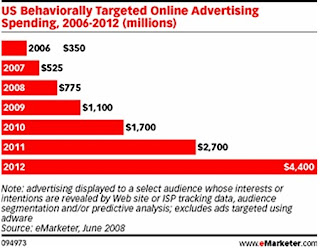Targeting advertising is seen by U.S. cable operators as a way to grow advertising revenue from $5 billion annually to about $15 billion annually. Mobile operators also have high hopes for targeted, location-aware ad targeting for mobile users.
At least for the moment, though, behavioral targeting is under a bit of a cloud. In the midst of Congressional pressure to assure user privacy, service providers seem to have suspended deployment of behavior targeting systems that allow them to target ads to specific users, at least until privacy compliance issues can be cleared up.
Charter Communications, Embarq, CenturyTel, Knology and Wide Open West are said to be among service providers that had been testing or deploying behavioral advertising technology from NebuAD, for example.
So it isn't surprising that providers of deep packet inspection systems are getting asked lots of questions about the possible impact on DPI technology and uses. On the contrary, says Cam Cullen, Allot Communications director, DPI technology is more importand in an environment where service providers might have to demonstrate they are complying with bandwidth management or privacy rules. Blocking of child pornography sites are another example of a legal requirement that requires DPI.
"You now must demonstrate you are behaving fairly" and DPI records will substantiate compliance, says Cullen. At the same time, Allot is seeing greater demand for the ability to assure priority for video and voice applications.
And since any ad targeting capability will require clear opt-in and opt-out policies, DPI will be essential in that regard as well.
Also, usage-based pricing requires counting packets on a per-user basis. A service provider might offer an unlimited VoIP plan, for example, with a data usage quota of 100 Gbytes a month. To avoid potential user ire, the service provider might want to separate those bits into different buckets, so VoIP packets do not come out of the 100-Gbyte quota.
Ed Markey, chairman of the House Subcommittee on Telecommunications and the Internet, and other high-ranking Congressman have questioned whether ad targeting practices (without explicit and clear opt-in policies) run afoul of the US Communications Act of 1934, the Cable Act of 1984, the Electronic Communications Privacy Act, and other wiretapping-related US statutes.
Behavioral targeting has gotten lots of service provider and content provider attention because it provides the sort of end user activity that Google and Yahoo already largely have, says Yankee Group analyst Daniel Taylor, giving ISPs a shot at what some believe will be a $50 billion U.S. targeted advertising business.
Behavioral targeting servers read the content of nearly every Web page that users visit, allowing unparalleled ability to discern user interests and activities. The problem is that targeting has generally has required an "opt out" process (you get it unless you opt out) rather than an opt-in process (you are not targeted unless you agree).
DPI, though, is not behavioral targeting. Behavioral targeting is used to analyze trends and identify Web page hits, site views and keywords. DPI is a tool used to provide granular inspection of IP packet headers and payloads for Layer 4 through Layer 7, destinations, application type and protocols, says Taylor.
DPI is a network monitoring and management tool that can be used to improve efficiency and provide quality of service.
DPI technologies can also be used in conjunction with advertising insertion servers, which is where the confusion between DPI and behavioral targeting occurs. In fact, Taylor thinks behavioral targeting raises so many issues it simply should be avoided, at least for the moment.




